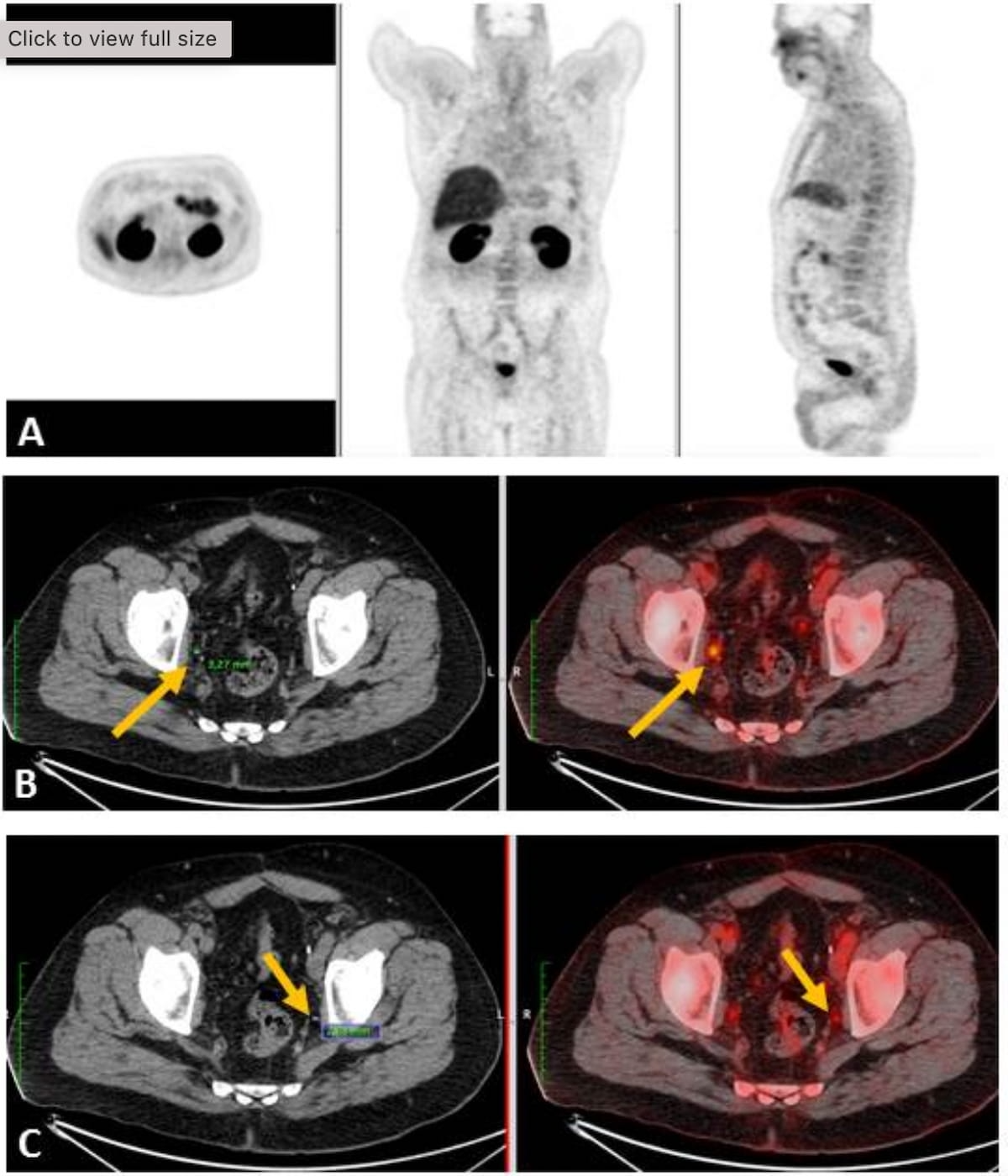Emerging PET Radiotracer May Offer Multiple Advantages in Detecting Prostate Cancer
The PET radiotracer 18F-PSMA-1007 facilitated detection of at least one suspicious lesion for metastasis in nearly half of a cohort of 160 patients with prostate cancer, according to research presented recently at the Society for Nuclear Medicine and Molecular Imaging (SNMMI) conference.
In addition to demonstrating nearly equivalent efficacy for the initial staging and biochemical recurrence of prostate cancer, the positron emission tomography (PET) radiotracer 18F-PSMA-1007 may improve detection of metastatic lesions, even in patients with low prostate-specific antigen (PSA) levels.
In a retrospective study presented recently at the Society for Nuclear Medicine and Molecular Imaging (SNMMI) conference, researchers assessed the use of 18F-PSMA-1007 in 160 patients with prostate cancer. The cohort was comprised of 31 patients for initial staging of prostate cancer and 129 patients for biochemical recurrence/restaging, according to the study.
The researchers found that 18F-PSMA-1007 was associated with a 72 percent positivity rate for abnormal findings in the overall cohort (115/160) with a 74 percent positivity rate at initial staging and a 71 percent positivity rate for patients with biochemical recurrence of prostate cancer.
In the primary staging group, the researchers noted that 18F-PSMA-1007 detected lymph node metastasis in 32 percent of patients and bone metastasis in 23 percent of patients.
“Notably, therapy planning was modified in 42 percent of patients,” pointed out study co-author Gerardo dos Santos, M.D., who is affiliated with the Hospital de Clinicas and Centro Uruguayo de Imagenologia Molecular (CUDIM) in Montevideo, Uruguay, and colleagues.
Here one can see micrometastases in right and left external iliac lymph nodes in axial PET/CT images (B and C) obtained with the use of 18F-PSMA-1007 in a 61-year-old patient with PSA relapse. Previous maximum intensity projection (MIP) images (A) revealed no abnormal findings. (Images courtesy of the Society for Nuclear Medicine and Molecular Imaging.)

(Editor’s note: For additional content from the SNMMI conference, visit https://www.diagnosticimaging.com/conferences/snmmi .)
For patients in the biochemical recurrence/restaging group, the 18F-PSMA-1007 agent detected prostate cancer recurrence and/or metastasis in 77 percent of the patients. The researchers added that even in patients with a PSA level < 1 ng/ml, 18F-PSMA-1007 had a 51 percent detection rate for prostate tumor activity and a 46 percent detection rate for extra-prostate metastases.
“(The agent’s) detection ability is not affected by PSA levels, which is an advantage in the range of early biochemical relapse,” noted dos Santos and colleagues.
Reference
1. Dos Santos G, Cordero I, Suanes K, et al. Diagnostic performance of novel 18F-PSMA-1007 PET/CT on the assessment of patients with prostate cancer in different clinical scenarios (diagnosis and follow-up): national experience in Cudim in 160 patients. Poster presented at the Society for Nuclear Medicine and Molecular Imaging (SNMMI) 2023 Annual Meeting, June 24-27, 2023, Chicago. Available at: https://am.snmmi.org/iMIS/SNMMI-AM . Accessed August 1, 2023.
What New Research Reveals About Novice Use of AI-Guided Cardiac Ultrasound
April 4th 2025In a study recently presented at the American College of Cardiology (ACC) conference, researchers found that novice use of AI-guided cardiac ultrasound after an AI-enabled electrocardiogram increased the positive predictive value for reduced left ventricular ejection fraction (LVEF) or aortic valve stenosis by 33 percent.
GE HealthCare Debuts AI-Powered Cardiac CT Device at ACC Conference
April 1st 2025Featuring enhanced low-dose image quality with motion-free images, the Revolution Vibe CT system reportedly facilitates improved diagnostic clarity for patients with conditions ranging from in-stent restenosis to atrial fibrillation.
New AI-Enabled Portable Ultrasound May Facilitate 50 Percent Reduction in Cardiac Imaging Scan Time
March 28th 2025Artificial intelligence (AI)-powered measurement capabilities provide key features with the Compact Ultrasound 5500CV device, which was unveiled at the American College of Cardiology (ACC) conference.
GE HealthCare Launches PET MPI Agent Flyrcado at ACC Conference
March 28th 2025The positron emission tomography myocardial perfusion imaging (PET MPI) agent, which offers a significantly higher half-life than other cardiac PET agents, was recently granted pass-through payment status by CMS that will go into effect on April 1, 2025.
New Collaboration Offers Promise of Automating Prior Authorizations in Radiology with AI
March 26th 2025In addition to a variety of tools to promote radiology workflow efficiencies, the integration of the Gravity AI tools into the PowerServer RIS platform may reduce time-consuming prior authorizations to minutes for completion.